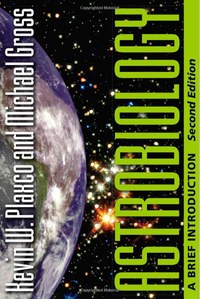Review: Astrobiology: A Brief Introductionby Jeff Foust
|
| Plaxco and Gross have extensively updated and expanded the book from the first edition, adding more than 60 pages compared to the original. |
At first glance, the second edition of the book looks very similar to the first. It has the same structure as the original, including nearly the same chapters (the second edition has a brief epilogue that the first edition lacked, the only difference between the two editions.) The covers are also nearly the same, with the new version using green text for the title instead of the orange text in the original. That might lead one to conclude that the second edition is only superficially different than the first.
That conclusion, though, isn’t supported by the book’s contents. Plaxco and Gross have extensively updated and expanded the book from the first edition, adding more than 60 pages compared to the original. While some sections of the new edition are pretty much the same as the original, others have benefited from updates, such as findings from NASA’s Mars missions and other spacecraft, as well as terrestrial research. (The two devote a roughly one-page sidebar to last year’s “arsenic life” discovery and its implications for astrobiology, but only tangentially allude to the controversy surrounding it by writing that “many—perhaps even most—experts remain unconvinced.”) Other changes are a more subtle, reflecting more gradual developments: the first edition noted that “the scientific consensus seems to have tilted away” from the claims that Martian meteorite ALH84001 harbors evidence of past Martian life; the second edition now says that consensus “seems to have tilted fairly strongly away” from that conclusion, reflecting five years’ worth of research that has not bolstered the case of Mars life proponents.
As in the first edition, the authors cover a wide range of scientific ground in Astrobiology: A Brief Introduction, from astronomy and planetary science to organic chemistry and biology. That breadth is necessary, though, to provide a full introduction to a field as diverse, and as dynamic, as astrobiology. The second edition of Astrobiology: A Brief Introduction does succeed in doing so—at least until more rounds of discoveries on and off Earth in the next several years necessitate a third edition.
